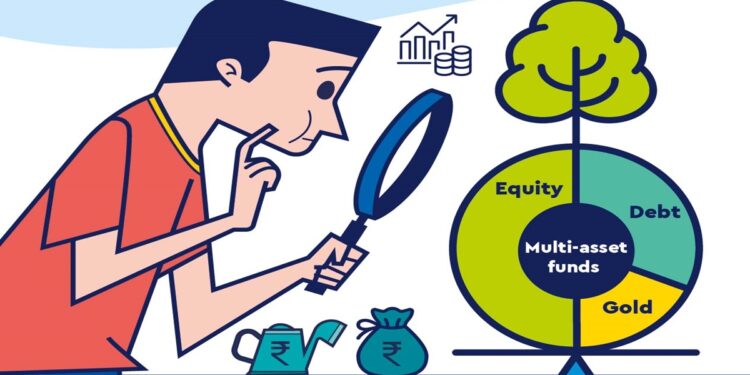The concept of multi-asset funds is comparatively new to the Indian market, but it is generating attention nationwide across different investor classes. So, if you are not aware of this concept and how it works, then it is high time to learn about it as the market is improving following the turbulent times of the Covid-19 pandemic.
What is a Multi-asset Fund?
Multi-asset funds are typically mutual funds that invest in various asset classes, including debt, equity and real estate or gold.
Ajit Kumar, Chief Strategy Officer, KFintech explains, “The allocation of investment in each class, however, depends on the investor. The inevitable question that arises here is why should one go for this fund instead of other mutual fund types? Well, there are two major reasons.”
Returns on mutual funds are related to the market performance and the risk associated with it. Therefore, Kumar says, “if one is investing in an equity fund, then it is less volatile to the market movement, but it will generate a comparatively lower return as well.
He further adds, “Similarly, multi-asset funds invest across various classes, and since every asset class will perform differently in an economy, the losses that one will incur from a debt investment will be balanced by the gold or real estate portion of it.” Therefore, in terms of ROI, you are not highly susceptible to losing your investment.
- Portfolio Diversification
Another primary reason for choosing multi-asset funds experts say is portfolio diversification. Here, Kumar points out “with a single investment, one is buying into three different asset classes, which is a unique opportunity.”
However, experts say before investing in this mutual fund type, you need to consider a few things to make an informed decision.
- Is the fund diversified enough?
- They are not alternates to individual portfolio diversifications
- Applicable tax benefits
- The fund manager
Also read: https://www.financialexpress.com/money/should-retail-investors-use-multi-asset-funds-or-invest-separately-in-each-asset-class/2553324/
Who are multi-asset funds suitable for and who should avoid them?
First-time investors are recommended to look at multi-asset funds rather than pure equity funds because the former provides a lower risk than the latter. Abhinav Angirish, Founder, of Investonline.in explains, “One can invest in a range of asset classes through the use of a single multi-asset fund. These asset classes include equity, debt, gold, real estate and overseas equities. One need not go through the hassle of investing in a variety of funds in these assets because of this.”
Having said that, “a fund that invests in a variety of asset classes may not always have the best performance in any particular year. This is because of the diversification that the fund provides,” he further adds.
For instance, with equities, the risk is there from volatility and concentration in one category or theme. With debt, there is liquidity risk, repayment or credit risk and interest rate risk. In gold, it could be inadequate growth and tax inefficiency.
According to industry reports and studies, more than 90 per cent of long term returns are determined by the mix of assets. Hence, it is more important for an investment to be diversified so that it is protected from high volatility than it is to maximise profits.
Angirish points out, “One might also be able to take advantage of a bull market with the assistance of multi-asset mutual funds. At the same time, it can withstand adverse market conditions such as a bear market. Having said that, experienced investors or those who have advisors can avoid this category.”
How are multi-asset funds taxed?
Multi-Asset Funds are more cost-efficient and tax-efficient compared to investments in individual assets. For equities, debt and gold investors pay short-term capital gains tax and long-term capital gains tax. Multi-asset funds are taxed like equities as they maintain 65 per cent equity exposure. If one holds them for over a year and gains over Rs 1 lakh are taxed at 10 per cent. Short term gains are taxed at 15 per cent.














